Multiple AKN bumps on the back of the head: Acne Keloidalis Nuchae, or AKN bumps, often appear in multiples. Although the condition is genetic and has nothing to do with hygiene or razor burns, the small bumps on the back of the head or at the nape are similar to razor bumps and got their name – AKN razor bumps, from there. Those tiny bumps may eventually grow, and some may merge to form a plaque or even a tumor-like mass. Most individuals suffering from AKN, though, will still be left with more than one separate bump.
That was the case for this young man of Hispanic descent. He had many small bumps scattered all over the back of his head. However, his main concerns were the two prominent lesions in the nape area. One of those was particularly big, and the patient was experiencing lots of pain and discomfort because of it.
Dr. Bumpinator to the Rescue
Before coming to Dr. Umar, the patient had tried to get rid of those bumps through an unsuccessful surgery. After that attempt, he researched and learned about the Bumpinator (Dr. Umar). In 2019, he came to Dr. Umar’s Manhattan clinic for consultation, where he was told his AKN consists of Class 2 plaques and tumorous mass, and consequently decided to get the masses removed by the doctor.
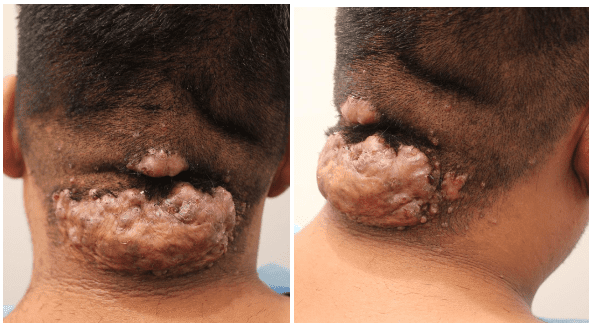
Dr. Umar used his unique technique to surgically remove the biggest plaque on the lower part of the patient’s head. AKN razor bump removal surgeries cause one major problem: wide and abnormally shaped scars that look out of place. Using surgical techniques he developed and tools that he invented, including the Athena Suture guards, Dr. U can control the wound healing process, ultimately resulting in the minimization of the scar and the bending of the scar to a shape that is closer to that of a posterior hairline. Dr. U recommended the patient wait for the removal of the smaller plaque until the incisions from the first surgery healed. He also recommended that the smaller scattered satellite lesions can be addressed by laser treatment.
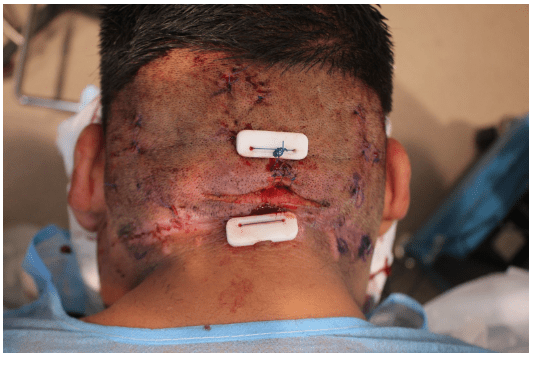
After the first surgery incisions had healed enough, the patient came in for his second AKN-removal surgery. This time, Dr. Umar got rid of the patient’s smaller plaque, and the much more minor AKN bumps on his head. The patient still had minuscule bumps scattered around after the second surgery, but Dr. Bumpinator judged it better to treat those with laser energy.
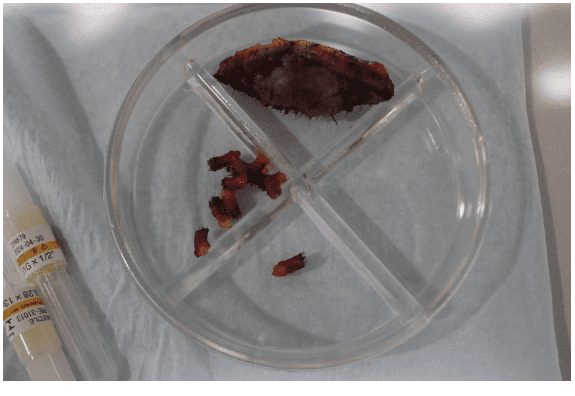
Dr. Bumpinator Pools out the Laser from his Tool Box for an AKN Coup De Grace
For the final task of mopping up the remaining satellite lesions, Dr. Bumpinator resorted to his laser toolbox. The doctor figured five laser sessions would be necessary for this particular patient. He spread those sessions apart by 6-8 weeks from each other. Since ingrown hairs trigger AKN, laser is an effective treatment for the AKN bumps because it destroys the roots of those trapped hair follicles. Doing so addresses the cause of AKN instead of just alleviating its symptoms.
Below are the patient’s excellent AKN surgery results with long and short haircuts.
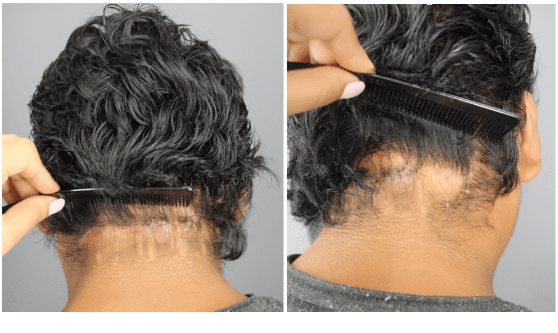
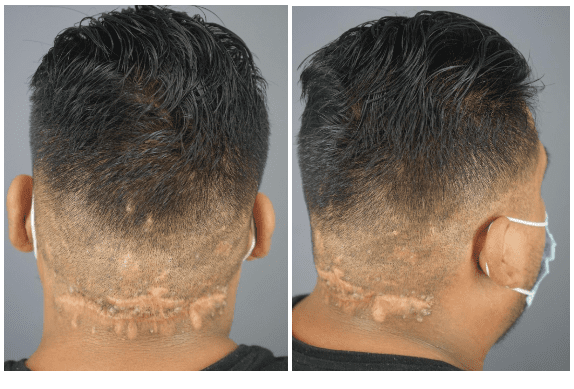
The patient was pleased with how his AKN-removal surgery results turned out. Living with the painful and visually unappealing plaques and finally getting those removed brought him a fresh breath of air.
The realization that he could even have a short haircut and not worry about people seeing the AKN bumps anymore was especially thrilling to the young man. He felt like he had a renewed sense of confidence and improved self-esteem.
Frequently Asked Questions
Will antibiotics treat my AKN razor bumps?
Antibiotics can help if you have developed a bacterial infection due to your AKN. This means you can alleviate some of the pain and discomfort associated with AKN with antibiotics. Unfortunately, you can’t eliminate AKN bumps and plaques simply by using antibiotics or other medication. You will need to undergo a surgical procedure to get rid of AKN once and for all.
What are some signs of AKN worsening?
If your AKN bumps are getting bigger and/or merging, it is a clear sign that your AKN is growing in severity. The longer you wait, the more problematic the bumps will get. You should be diagnosed and treated as soon as possible.
References
- Umar S, Lee DJ, Lullo JJ. A Retrospective Cohort Study and Clinical Classification System of Acne Keloidalis Nuchae. J Clin Aesthet Dermatol. 2021;14(4):E61-E67.
- 21 Types of Skin Lesions, Pictures, Causes, and More. Healthline. https://www.healthline.com/health/skin-lesions. Published 2022. Accessed August 3, 2022.


